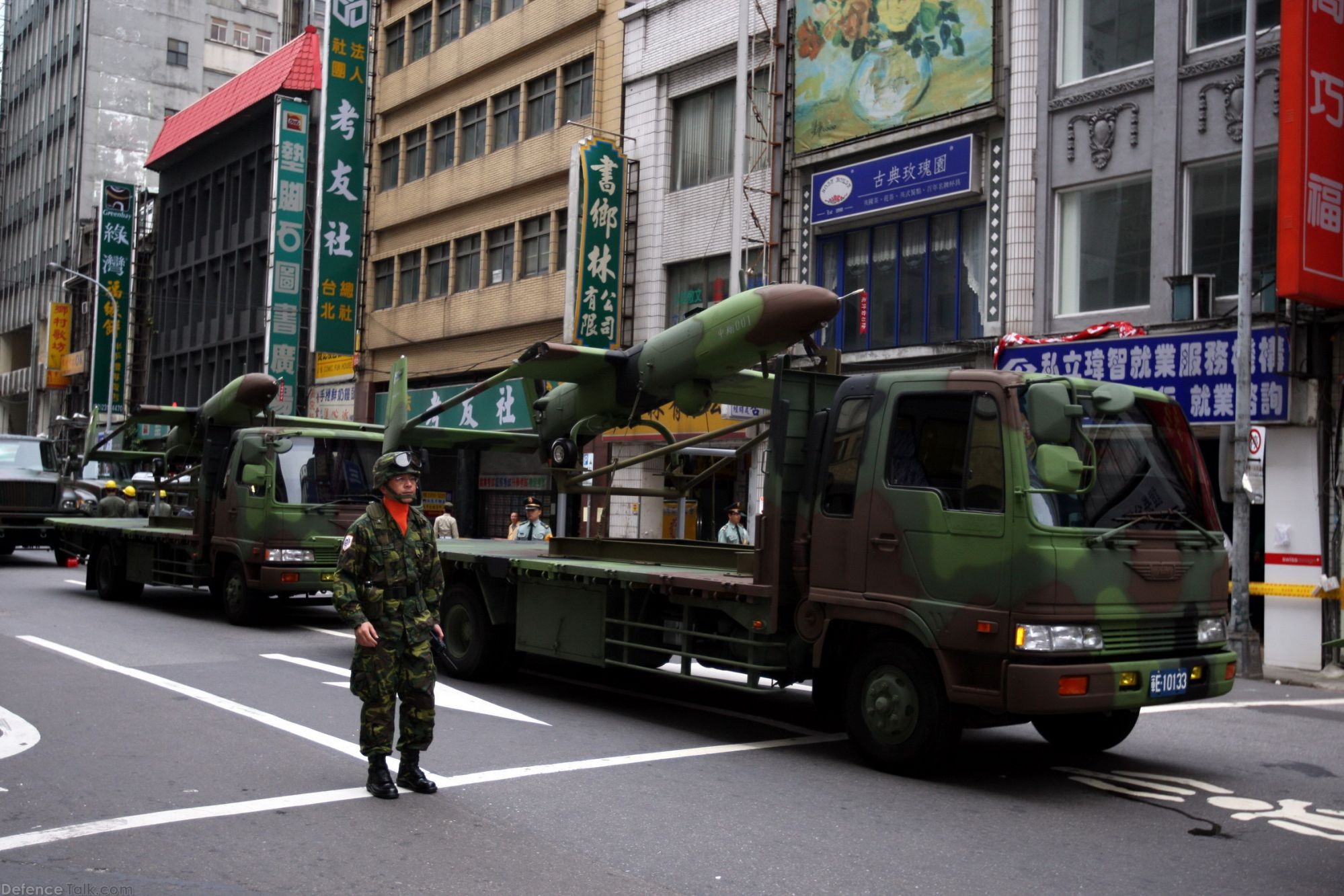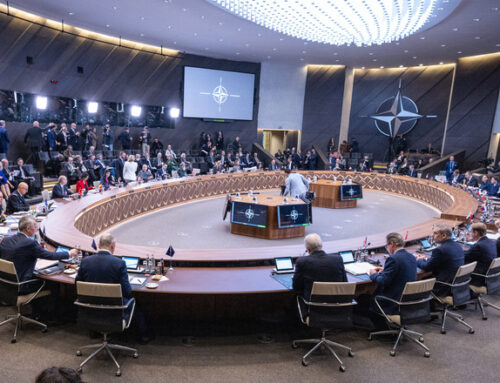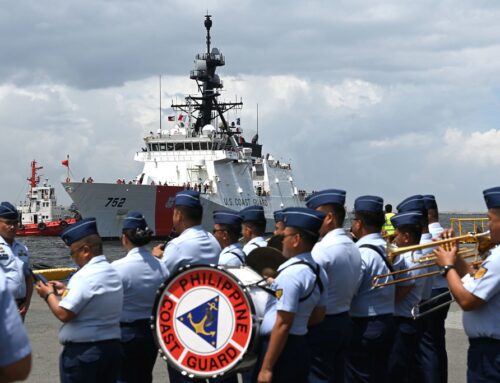Chung_Shyang_II_UAV taiwan
Autor foto: Domena publiczna

Poland – Taiwan: possibilities and constraints of defense collaboration
19 kwietnia, 2023


Chung_Shyang_II_UAV taiwan
Autor foto: Domena publiczna
Poland – Taiwan: possibilities and constraints of defense collaboration
Autor: Robert Czulda
Opublikowano: 19 kwietnia, 2023
Although defense cooperation with Taiwan (Republic of China) is difficult, as it is burdened with numerous risks, there are several areas that can be developed. This is a particularly good moment, as Taiwan is actively seeking international partners, while Poland seems to be increasingly bold in its foreign and security policy, venturing beyond Europe.
Poland, just like the majority of states, does not maintain official diplomatic relations with Taiwan. Currently, only 13 states have diplomatic relations with the Republic of China. This small number is not due to their recognition of the People’s Republic of China – as there are many examples of divided countries that both have international recognition (such as Koreas or two German states during the Cold War). This is a result of Beijing’s unequivocal policy based on the “One China” principle. In other words, the communist regime uses the carrot and stick approach to force all countries to make unambiguous statements about their diplomatic preferences. Warm relations with Taiwan mean clear and vocal dissatisfaction from Beijing.
An example is Lithuania, which was recently pressured by China for its pro-Taiwan approach. Such intimidation is usually effective, as in the case of Switzerland, which refused to sign a bilateral agreement to strengthen scientific and technological cooperation with Taiwan, arguing that it would be inconsistent with the “One China” policy.[i] Recently, Poland was criticized by Beijing. In April 2023, the Chinese embassy in Warsaw expressed „strong disapproval of and vehement opposition” after Polish Prime Minister Mateusz Morawiecki said that the PRC might invade Taiwan if Russia wins its war against Ukraine.[ii]
However, this does not mean that cooperation with Taiwan is not possible or non-existent. Poland has established the Polish Office in Taipei, while there is also a Taiwanese counterpart in Warsaw. In practice and unofficially, they function as embassies and consulates to a large extent. Currently, Taiwan is Poland’s seventh-largest trading partner in Asia. In 2021, the trade turnover exceeded 2.6 billion USD, which represents a year-on-year increase of 33%.[iii] Poland also maintains cultural ties with Taiwan.
Dual use technologies
According to available information, „Poland exports to Taiwan, among others, products of the electromechanical industry, chemical industry, as well as food products. Products from the electromechanical industry (LCD panels, semiconductors, and other electronic parts), metallurgical products, mechanical vehicles, and their parts are among the imports from Taiwan to Poland. Trade between the two countries is characterized by a deficit on the Polish side”.[iv]
An important area of cooperation between Poland and Taiwan could be semiconductors, which already constitute one of the most crucial „resources” in the contemporary world. Their importance, due to the ongoing computerization, will continue to grow. According to data from the Semiconductor Industry Association (SIA), over a trillion semiconductors are sold globally each year. Sales amounted to USD600 billion in 2021, and these values are expected to continue to increase.[v] Taiwan is the undisputed leader in this production sector, which is crucial for both civilian and military markets. TSMC (Taiwan Semiconductor Manufacturing Company), the world’s largest producer and provider of over half of the world’s semiconductors, supplies components for, among others, the F-35 aircraft.[vi]
In 2022 Poland identified fields it wants to develop jointly with Taiwan. In addition to semiconductors, these include electromobility and hydrogen. Although these are largely civilian technologies, some of them, particularly semiconductors, have direct applications in a military sector (the F-35 mentioned earlier can serve as an example). For Poland, which has ambitions to develop its own defense industry and build domestic expertise not only in assembly, but also in production and design, such cooperation could be valuable. Semiconductors are used in every military system that contains electronic components, from radios and guided anti-tank missiles to radar systems (for example, each Javelin missile contains about 250 microprocessors).[vii]
Defense industry
Taiwan – despite its formal international position – has industrial partners, although it must be admitted that the list is short. The most important partner is the United States, which is the main guarantor of security and exporter of weapons to Taiwan. A plan to intensify military and industrial cooperation appeared in Japan when Shinzo Abe was prime minister (both countries share the same strategic outlook, including towards the PRC). In the past, France provided Taiwan with systems such as Mirage fighter aircraft and Lafayette-class frigates. Now Paris is involved in upgrading decoy launchers for its navy’s Kang Ding-class frigates.[viii] Taiwan relies on foreign partners in its project to build new conventional submarines. Although this project is confidential, according to press reports, „defense companies and engineers from at least seven countries” are involved.[ix]
Importantly, the Taiwanese defense industry is no longer entirely focused on a domestic market, but also offers its production abroad. NCSIST (National Chung-Shan Institute of Science and Technology) has started to showcase its offer at defense exhibitions around the world, including at MSPO in Kielce. NCSIST offers aerospace systems, missile and rocket systems, information and communication, materials (including chemicals), electronics, and electro-optics.
NCSIST presented in Poland its offer of ground-to-ground, ground-to-air, air-to-air, as well as surface-to-air and surface-to-surface systems. An example of the latter category, which illustrates the scope of NCSIST’s work, are the Hsiung Feng anti-ship missiles. Three variants (I/II/III) are successfully used on Taiwanese warships. The newest variant (III) was presented in 2011 and gained a propaganda reputation as a „carrier killer”.[x] NCSIST has also promoted its air-to-air systems offer, known as Tien Chien. Its design is based on the American AIM-9L Sidewinder missiles.
Another interesting design that NCSIST has in its offer is the Wan Chien subsonic air-to-ground cruise missile with a 350-kilogram sub-munition warhead or a conventional explosive warhead. Taiwan also has systems designed to counter airborne targets – not only aircraft and helicopters, but also unmanned aerial vehicles, ballistic missiles, and maneuvering ones. Although Taiwan has the American Patriot system (starting with PAC-2 MEADS, and then PAC-3 and Config 3+ GEM), it has been developing its own solutions since the summer. This is the Tien Kung I/II/III family, with the latest version having improved anti-ballistic capabilities.
Conclusions
Any purchase of weapons by Poland from Taiwan should be considered as an unlikely scenario. This is partly because Poland already has a network of partners, mainly the United States and South Korea, and acquiring similar weapon systems from another country would be unreasonable. Additionally, selling weapons to Taiwan is also unlikely, as it would be a politically risky move and would certainly provoke a reaction from the PRC, possibly resulting in political and economic retaliation.
However, this does not mean that any kind of defense cooperation between Poland and Taiwan is impossible. Especially if it remained secret. Although this condition seems difficult to meet, an example of Taiwan’s new submarine project and a lack of information about foreign partners shows that it is possible.
Main areas for cooperation, both short- and long-term, are primarily joint research and development projects, particularly in new technologies. The list includes various dual-use technologies, such as IT solutions, including artificial intelligence or microchips. As for more defense-related technologies, missile systems, rocket propulsion, opto-electronic sensors, command-and-control, communication and radar technologies are also potential areas of cooperation. Export and import could involve individual components and know-how rather than entire systems. This would potentially allow to reduce the risk associated with Beijing’s hostile reaction.
Deepening defense cooperation would be more likely if certain conditions were met. First, Polish decision-makers would have to show greater courage in seeking partners for cooperation outside of Europe (a series of defense agreements with South Korea may suggest that this has happened – an open question is whether it is just an exception or an illustration of a new and long-term trend in Polish foreign and security policy). Second, it would be important to obtain assistance from allies, primarily the United States, which would have to support such actions. Support from the European Union could also be crucial – if a number of European states, as well as EU institutions, were to promote such cooperation, it would be more difficult for China to apply retaliatory measures.
Supported by a grant from the Open Society Initiative for Europe within the Open Society Foundations
[i] Sara Ibrahim, „Fearing China, Switzerland sacrifices scientific ties with Taiwan”, Swiss Info, April 11, 2023,
[ii] Piotr Bujnicki and Piotr Skolimowski, „China Blasts Polish Leader for Comparing Taiwan to Ukraine”, Bloomberg, April 14, 2023, https://www.bloomberg.com/news/articles/2023-04-14/china-criticizes-polish-official-over-taiwan-comments.
[iii] “Chipowa współpraca Polska – Tajwan?”, Filary Biznesu, May 28, 2022, https://filarybiznesu.pl/chipowa-wspolpraca-polska-tajwan/a15293.
[iv] „Relacje dwustronne”, Biuro Polskie w Tajpej, no date, https://poland.tw/web/tajwan/tajwan
[v] Meghan Rimol, „Gartner Says Worldwide Semiconductor Revenue Grew 26% in 2021”, Gartner, April 14, 2022, https://www.gartner.com/en/newsroom/press-releases/2022-04-14-gartner-says-worldwide-semiconductor-revenue-grew-26-percent-in-2021.
[vi] Shane McGlaun, “TSMC Under U.S. Pressure As Chip Supplier For Lockheed F-35 Lightning II: Report”, Hot Hardware, January 16, 2020, https://hothardware.com/news/tsmc-under-pressure-to-build-chips-in-us.
[vii] Joe Gould, „Lockheed, aiming to double Javelin production, seeks supply chain ‘crank up’”, Defense News, May 9, 2022, https://www.defensenews.com/industry/2022/05/09/lockheed-aiming-to-double-javelin-production-seeks-supply-chain-crank-up.
[viii] Xavier Vavasseur, “ROC Navy Kang Ding-Class Frigates Set For Decoy Launcher Upgrade”, Naval News, April 17, 2020, https://www.navalnews.com/naval-news/2020/04/roc-navy-kang-ding-class-frigates-set-for-decoy-launcher-upgrade.
[ix] Mari Saito, Yimou Lee, Ju-Min Park, Tim Kelly, Andrew Macaskill, Sarah Wu And David Lague, “T-Day: The Battle for Taiwan”, Reuters, November 29, 2021, https://www.reuters.com/investigates/special-report/taiwan-china-submarines.
[x] Yu Nakamura and Tsukasa Hadano, „Taiwan Navy launches 'carrier killer’ with 28 missiles”, Nikkei, September 10, 2021, https://asia.nikkei.com/Politics/Taiwan-Navy-launches-carrier-killer-with-28-missiles.






